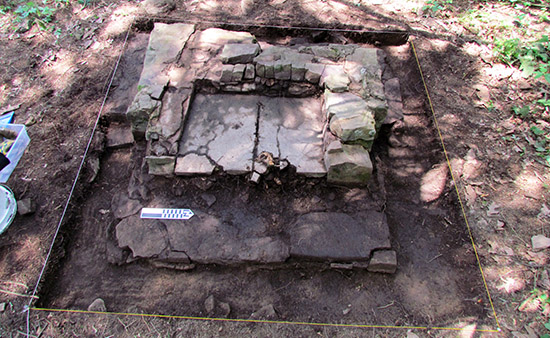Dr. Duncan P. McKinnon
Assistant Professor, University of Central Arkansas
Director, Jamie C. Brandon Center for Archaeological Research
Artifact of the Month – August 2020

The artifact of the month for August is a Civilian Conservation Corps (CCC) token, known also as a CCC exchange token (Akin et al. 2016:102–103; Wahlberg 1978). When the Federal New Deal program was established in 1933, the CCC was tasked with the creation of various work camps located on lands owned by federal, state, and local governments. Unemployed and unmarried young men from relief families were enrolled to live in the camps and provide unskilled manual labor. Labor efforts were related to conservation and management of natural resources in forestry, soil conservation, erosion, irrigation, fire brigade, the construction of recreational facilities, bridges, hiking trails, and other infrastructure and public works projects (Maher 2009).
In Arkansas, the CCC established over 60 camps between 1933 and 1942 that were situated throughout the state to support Federal Game Refuges, National Forests, National Parks, and State Parks, as well as those tasked with assisting local rural agencies (McCarty 1977; Smith 1991). Some of the better-known state parks, camping facilities, and hiking trails are a product of the labor provided by these young enrollees and are still in regular use today.
CCC camps were often rural and located some distance from cities or commercial centers. As such, camp stores or exchanges, much like commissaries on military bases, were set up so enrollees could more easily purchase basic necessities and inexpensive luxury items. Using a small portion of their monthly pay (most was mandatory allotment sent back to their families), enrollees could buy exchange tokens or paper coupons for use at the camp store.
This exchange token was recovered from Camp Halsey (3FA313) during the 2019 UCA field school excavations. Camp Halsey is located about 10 miles east of Greenbrier, Arkansas in what was the rural community of Centerville. The token was found, rather serendipitously, buried in debris that had accumulated in the hearth of a chimney base. The chimney base is associated with the camp Officer’s Quarters, which was a rigid frame wood structure with five rooms and a capacity of four individuals. The building is no longer standing.

